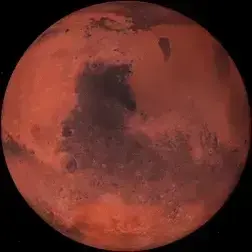A group of astronomers want to change the definition of a planet. Their new proposed definition wouldn’t bring Pluto back into the planetary fold, but it could reclassify thousands of celestial bodies across the universe. From a report:
The International Astronomical Union’s (IAU) current definition of a planet, established in 2006, includes only celestial bodies that are nearly round, are gravitationally dominant and orbit our Sun. This Sun-centric definition excludes all of the bodies we’ve discovered outside our solar system, even if they may fit all other parameters. They are instead considered exoplanets. Those behind the new proposal critiqued the IAU’s definition in an upcoming paper in the Planetary Science Journal, arguing it’s vague, not quantitative and unnecessarily exclusionary.
Their new proposal would instead classify planets based on their mass, considering a planet to be any celestial body that:
- orbits one or more stars, brown dwarfs or stellar remnants and,
- is more massive than 10ÂÂ kilograms (kg) and,
- is less massive than 13 Jupiter masses (2.5 X 10^28Âkg).


It may be better than an arbitrary cutoff, but I will die on the hill that it’s still the wrong way to look at a taxonomic system for non-fusors. Using system dynamics to classify parts of a system is all well and good when you’re, well, disecting systems, but this was about defining individual bodies.
Using extrinsic contexts rather than intrinsic ones is how you define dolphins as fish.
Spherical due to being in hydrostatic equilibrium is all we need. But that raised tooany questions about the accuracy of system models for system modellers.
No we’re not, unless you’re going to include dozens of moons as “planets” as well. Moons and planets have nothing to distinguish them except their system dynamics.
I’m not sure what you mean here. Are you suggesting that dolphins and fish are defined based on where they are, rather than what they are? It wouldn’t make sense to do that. But that has no bearing on whether it makes sense to classify astronomical bodies that way because in their case extrinsic contexts actually are relevant.
I actually don’t much like that part of the definition system either since it has the same “unclear fuzzy boundary” problem that a simple mass cutoff has. There’s no physical reason to expect there to be a gap between “round” and “not-round”, objects will be expected to have a smooth continuum. Some objects will change their roundness over time as their material slumps, even. But fortunately it’s not really relevant to the distinction between planets and non-planets, it only comes into play for distinguishing dwarf planets from smaller bodies. And there isn’t much public sense of investment in whether the formation of Rheasilvia should or should not invalidate Vesta’s claim to dwarf planethood, so it doesn’t come up much.